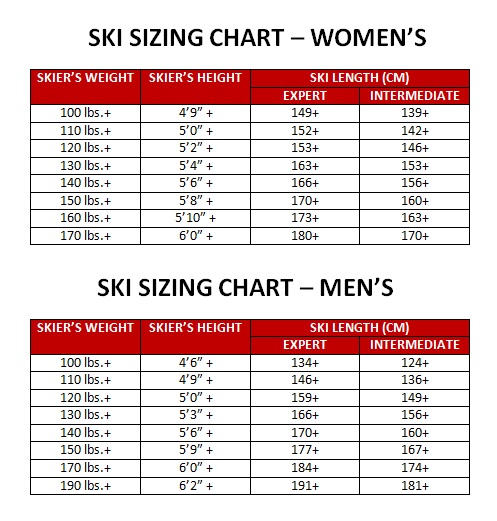The crisp mountain air bites at your cheeks. Fresh powder beckons. You're geared up and ready to carve…but are you on the right skis? The length of your skis is crucial, a defining factor in how you experience the mountain, influencing everything from effortless turns to confident control. Choosing the correct ski length isn’t just about aesthetics; it’s about optimizing your performance and maximizing your enjoyment.
For decades, skiers have grappled with the question of ideal ski length. What was once a relatively straightforward calculation based primarily on height has evolved into a more nuanced consideration. Factors like skiing style, skill level, and terrain preference now play a significant role in determining the perfect pair. This evolution reflects the advancements in ski technology and the diversification of skiing disciplines, from carving groomers to conquering backcountry powder.
Historically, skis were significantly longer, often reaching well above a skier’s head. These longer skis provided stability at speed, but were cumbersome and difficult to maneuver. As ski technology progressed, with innovations in materials and construction, skis became shorter, lighter, and more responsive. This shift opened up new possibilities for skiers, allowing for quicker turns and a more dynamic experience on the slopes.
The importance of proper ski length cannot be overstated. It directly impacts your ability to control your skis, initiate turns, and maintain stability at various speeds and on different snow conditions. Choosing skis that are too long can make them difficult to handle, leading to fatigue and a higher risk of falls. Conversely, skis that are too short can feel unstable at higher speeds and may not provide sufficient float in powder.
So, how do you determine the appropriate ski length for your needs? There's no one-size-fits-all answer. The “right” length depends on a complex interplay of factors, starting with your height and weight, and extending to your skiing ability and preferred terrain. Beginner skiers generally benefit from shorter skis for easier maneuverability, while more advanced skiers might opt for longer skis for greater stability at higher speeds.
Let's delve into the factors influencing optimal ski length. Your height and weight serve as a starting point. Generally, skis should fall somewhere between your chin and forehead when stood on end. However, this is a very general guideline. Weight is also a key factor, as heavier skiers may prefer slightly longer skis for added stability.
Your skill level is another critical consideration. Beginners benefit from shorter, more manageable skis that are easier to turn and control. As you progress, you can gradually increase the length of your skis to match your evolving skills and confidence.
The type of skiing you enjoy also plays a role. If you primarily ski groomed runs, you might prefer shorter, more agile skis. For off-piste adventures and powder skiing, longer skis offer greater float and stability in deep snow. Park and pipe skiers often opt for shorter, twin-tipped skis designed for tricks and jumps.
Several online resources and apps can help you determine the appropriate ski length based on these factors. Many ski manufacturers also provide detailed sizing charts on their websites. Consulting with a ski shop professional can offer personalized recommendations tailored to your individual needs.
Advantages and Disadvantages of Different Ski Lengths
| Ski Length | Advantages | Disadvantages |
|---|---|---|
| Shorter | Easier to turn, maneuverable, ideal for beginners and slower speeds | Less stable at high speeds, less float in powder |
| Longer | Stable at high speeds, greater float in powder, suitable for advanced skiers | More challenging to turn, less forgiving for beginners |
Finding the perfect ski length is a journey of discovery. It’s about understanding your skiing style, embracing the nuances of the mountain, and fine-tuning your equipment to optimize your performance. By considering the factors discussed above, you can confidently choose skis that will enhance your skiing experience and unlock new levels of enjoyment on the slopes.
Choosing the correct ski length is crucial for maximizing your skiing experience. It impacts your control, stability, and overall enjoyment on the slopes. Consider your height, weight, skill level, and preferred terrain when selecting your skis. Consulting with a ski professional can provide personalized guidance. Don't be afraid to experiment and find the perfect length that allows you to confidently carve your own path down the mountain.
Decoding ncaa wrestling rankings the ultimate guide
Suns sting decoding that itchy skin after sunbathing
Find your perfect rental home in bukit beruntung
A great season begins with the right choice of skis - Khao Tick On
What Size Nordic Skis Do I Need - Khao Tick On
comment choisir la taille des skis paraboliques - Khao Tick On
Experts Tips to Finding the Right Size Skis - Khao Tick On
Ski Length Guide Men - Khao Tick On
Downhill Ski Size Chart - Khao Tick On
Choosing the size of your skis - Khao Tick On
How to Ski Parallel - Khao Tick On
How Long Should X Country Skis Be at David Scheele blog - Khao Tick On
termen limita Răspunde Altoire ski length calculator Simplifica - Khao Tick On
How Long Do Skis Last For at Neil Jackson blog - Khao Tick On
Choosing the size of your skis - Khao Tick On
How to Choose the right Ski length - Khao Tick On
What Ski Length Should I Get Choose The Correct Ski Size - Khao Tick On
Downhill Ski Pole Length Chart - Khao Tick On














